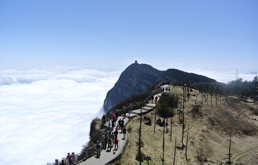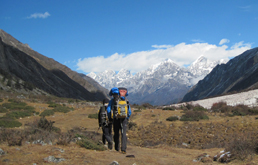Chengdu
Hometown of Pandas
Jiuzhaigou
Famous Fairyland
Emeishan
Sacred Buddhist Site
Leshan
Giant Buddha
Gonggashan
Best for Hiking
Daocheng Yading
Shangri La Views
Dujiangyan
Irrigation System
Siguniangshan
Eastern Alps
Dujiangyan Panda Base is short for “The Chengdu Research Base of Giant Panda Breeding Dujiangyan Field Research Center for Giant Pandas”. It is another panda base built by the same organization of Chengdu Panda Research and Breeding Center. It is home to around 15-20 pandas and is one of the 5 panda bases in/around Chengdu and is the smallest one. Dujiangyan Panda Valley can be a busy and touristy place during summer time from June to August.
One of the missions of Dujiangyan Panda Valley is to re-introduce pandas into the wild. It is both a research platform and a demonstrative base for science education and conservation, Panda Valley provided a place for reintroduction training on captive-born pandas. At Panda Valley, visitors and researchers alike have learned about the living conditions of giant pandas returned to nature, the progress of reintroduction research and trends for future researches.
Panda Valley is located in the town of Yutang, DujiangyanCity, Sichuan Province, in the front mountain of the Qionglai Mountains. It is 50 kilometers west from Chengdu and 5 kilometers away from the downtown Dujiangyan.
-By Fast Train from Chengdu Xipu Railway Staiton to Dujiangyan takes just over 50 minutes to reach Dujiangyan and hire local taxi to arrive at Panda Valley in 10km.
-By Bus from Chengdu Chadianzi Bus Terminal all the way to Dujiangyan and use local taxi from here for around 15km. Sometimes during the busy season there is direct bus from Xinnamen Bus Station to Dujiangyan Panda Valley.
--You may also hire a private transfer from us to pick you up from your hotel in Chengdu and then drop you off after your visit.
Spring(Mar and Apr) will start to get busy when daily visitor number is at around 2000 to 3000 people while from Apr it starts to get busier and reaches the busiest season by July when a daily visitor reaches over 4000 people. From around Dec it starts to cool off when a daily number of visitors is below 1000 people. Pandas prefer cooler/colder conditions other than warm or hot weather. During hot weather pandas usually stay indoor more. Hot weather starts from early April til mid October.
During a day the best time to visit pandas by Dujiangyan Panda Valley is from 9:30am to 11:00am and 2:00pm to 4:00pm when pandas are fed and more active.
 Dujiangyan Panda Valley Map
Dujiangyan Panda Valley Map
Around 15 giant pandas;
Total around 10 red pandas;
“Famous” panda such as Oreo, Wu Yi, De De;
Entrance Ticket: 50yuan /person, ticket needs to be done online available 7 days prior to your visiting date;
Business Hour: 08:00-17:00;
Recommended Time for Visit: 2 hours;
This panda base is small and well-marked and visiting route is well-designed;
Dining: there is one small shop inside but no restaurants available;
Wheelchair accessible;
Luggage Storage available;
Guide Service Available;
Panda Volunteer Work unavailable;
This place covers an area of 2004 mu, roughly equivalent to 134 hectares over the green and lush mountains of lower Qionglaishan Range. Nearby is the world heritage places including the two thousand-year old Dujiangyan Irrigation Project(15km) and the Qingcheng Mountains(10km), a shrine of Chinese Taoism. You may consider to include these visits while planning visit to Dujiangyan Panda Valley.
Sichuan Travel Guide can arrange private tours to Dujiangyan Panda Valley please feel free to send your inquiry.

Route: Chengdu - Dujiangyan - Chengdu

Route: Chengdu - Leshan - Emeishan - Chengdu

Route: Chengdu - Kangding - Gongga - Chengdu